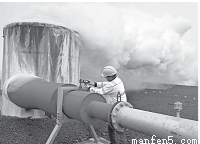题目内容
On a Saturday night at home while relaxing with friends, a dog showed up at the house. In an attempt to find the legal owner and return the dog, we knocked on the door of the legal owner and an old man opened the door. This was the start of an interesting week.
The old man sat down, made himself at home, and gifted us the dog. After a brief visit, he left, and we were now the proud owners of this dog. It takes experience and knowledge to know that our lifestyle can’t satisfy the needs of this dog; the owner that gifted us the dog was mismatched for him as well.
Three attempts to return the dog to his old owner failed. (I think he was avoiding us.) Because our lifestyle didn’t allow us to give this poor dog the attention he needed, he disturbed the neighbors. They got involved. After we shared the story, they gained a new perspective and wisely stepped in to help us find a solution.
One week later it was decided that dog would be picked up from us by the old neighbor. He would then return it to the previous owner who was more equipped to care for it.
When faced with unexpected challenges in life, it helps to see everyone’s perspective. We have to look at one another’s perspective to solve a problem with honesty, experience and knowledge. That’s the sign of a leader. Although the old neighbor typically has little to do with leadership, it did bring a neighborhood together to understand one another and work as a team to solve a problem.
1.Why was the dog taken to the author’s home?
A. To find food to eat.
B. To seek a proper owner.
C. The author was friendly to him.
D. The old man couldn’t feed him.
2.What did the author find after he was gifted with the dog?
A. He didn’t like the dog at all.
B. He could deal with dog easily.
C. The old neighbor was cheating him.
D. It was unsuitable for him to keep the dog.
3.What does the author intend to stress in the text?
A. The value of team spirit.
B. The smartness of the old neighbor.
C. The importance of leadership skills.
D. The need for calmness in front of challenges.


